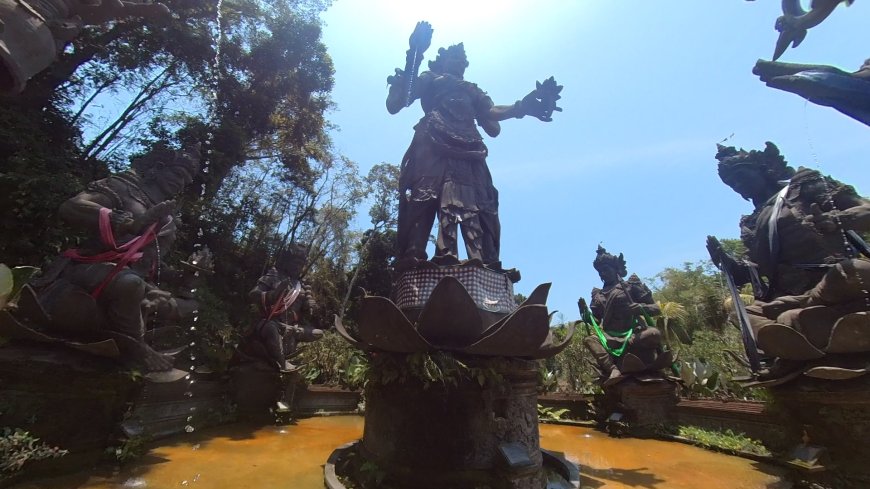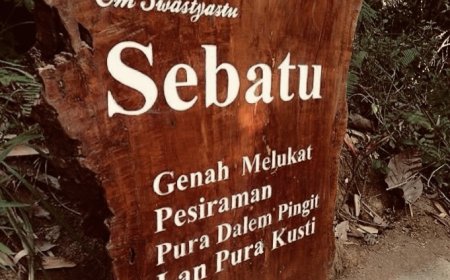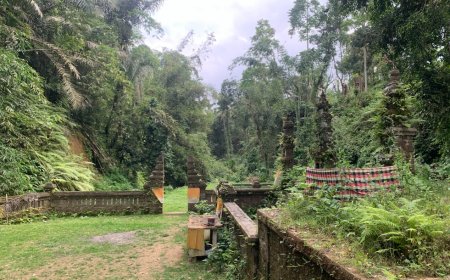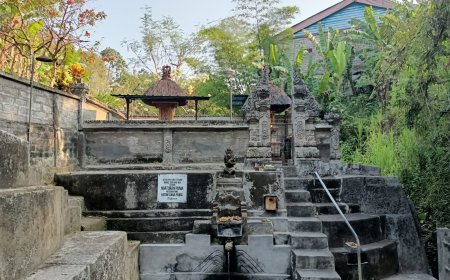Pura Beji Amerta Gangga: 9 Holy Waters from the Dewata Nawa Sanga
Pura Beji Amerta Gangga, a temple in Bali, is renowned for its artistic carvings, architectural beauty, and the grandeur of the Dewata Nawa Sanga statues. After renovation, the temple serves not only as a place for purification rituals but also as a stage for arts and culture performances. In addition to artistic performances, the temple is used for "pelukatan," a ritual self-purification from negative energy using holy water.

Bali Island is renowned for its extraordinary cultural wisdom, whether in terms of natural beauty or the charm of its thousands of temples. The intricate details of temple carvings, combined with the architecture of the structures, create a comfortable and beautiful environment for anyone visiting. This is evident in Pura Beji Amerta Gangga, located in Banjar Kelucung Kelod, Tegalmengkeb Village, East Selemadeg, with its magnificent statue of Dewata Nawa Sanga.
Pura Beji Amerta Gangga has long been recognized by the local community as a revered place for purification rituals during religious ceremonies or piodalan. After undergoing renovations, the temple is now equipped with a stage for arts and cultural performances. However, the temple's significance extends beyond these functions. In addition to being a venue for artistic performances, it is also a location for purification rituals and the request for special holy water used in spiritual healing practices.
Pura Beji Amerta Gangga (Source: Private Collection)
Pelukatan, or purification, is a ritual cleansing process to rid oneself of negative energy using various natural elements. In Bali, this process is typically performed using water, either by bathing in special pools or being showered with water from a specific stream. The ritual aims to cleanse the body and mind from negative influences and achieve spiritual harmony.
The concept of purification in this temple is unique as it involves circumambulation in the nine cardinal directions. Starting from the east with Dewa Iswara, it proceeds to the southeast (Dewa Maheswara), south (Dewa Brahma), southwest (Dewa Rudra), west (Dewa Mahadewa), northwest (Dewa Sangkara), north (Dewa Wisnu), northeast (Dewa Sambhu), and finally the central direction (Dewa Siwa). Each statue of Dewata Nawa Sanga is accompanied by a water spout flowing from the hands of the gods, which is then used in the purification process. The presence of these water spouts adds grandeur to the statues of Dewata Nawa Sanga. Moreover, the names of the gods and the holy water, along with their benefits, assist visitors in conveying their prayers.
Pura Beji Amerta Gangga (Source: Private Collection)
Each statue of Dewata Nawa Sanga plays a unique role in the purification process. The water spouts flowing from the hands of these gods are directed towards the nine cardinal directions, creating a devout and profound ritual atmosphere. The purification process involving circumambulation in these cardinal directions reflects the harmony between humans and nature, as well as the belief in the spiritual power reflected in every step.
It is important to note that Pura Beji Amerta Gangga not only presents visual beauty but also provides spiritual guidance to visitors. Around the temple, there are inscriptions explaining the names of the gods, the names of the holy water, and the benefits of the holy water, offering guidance on appropriate prayers during the purification process, enriching the spiritual experience of visitors.
Statue of Dewata Nawa Sanga in Pura Beji Amerta Gangga (Source: Private Collection)
The spiritual experience at Pura Beji Amerta Gangga not only enriches the souls of visitors but also showcases the living and evolving cultural richness of Bali. The combination of art, tradition, and spiritual values makes Pura Beji Amerta Gangga a unique destination worth visiting on the island. Thus, visitors can not only enjoy the physical beauty of the temple but also feel the profound cultural and spiritual wisdom, providing a more holistic and memorable experience.






























































